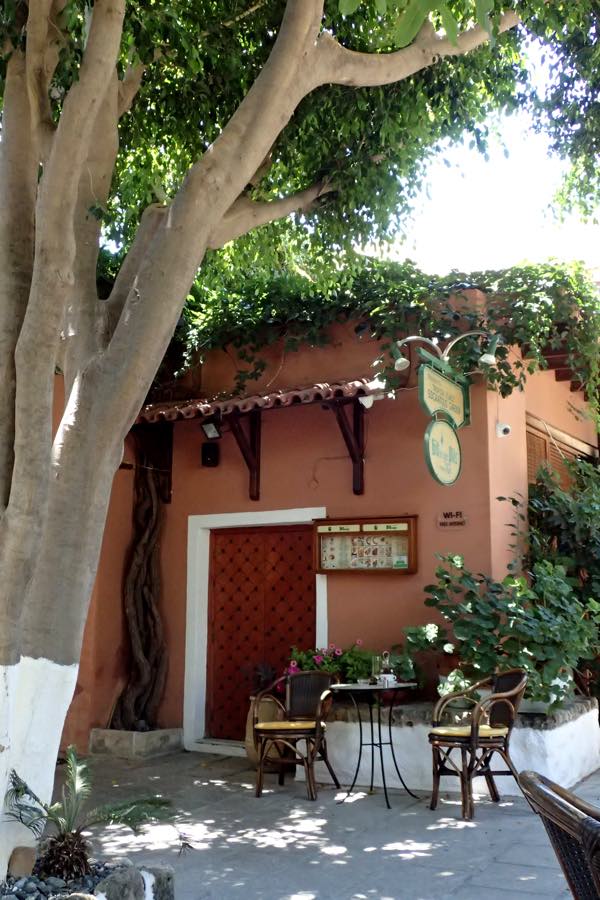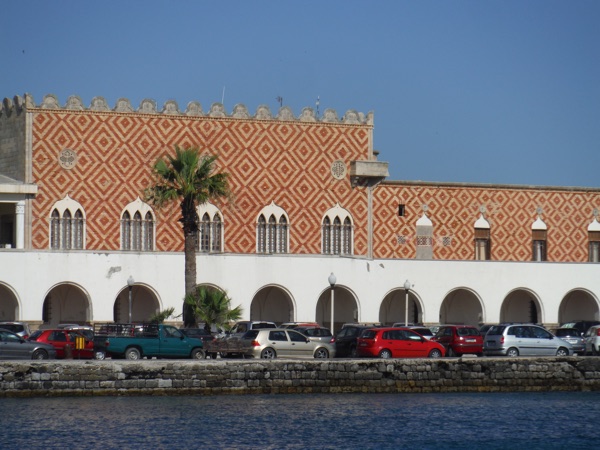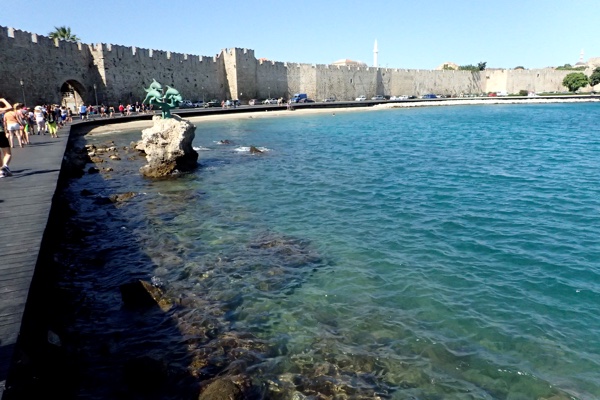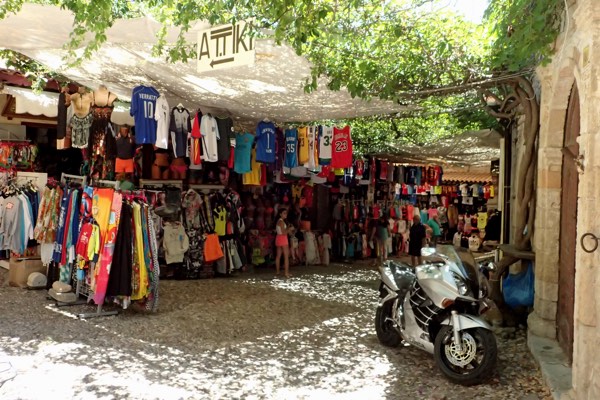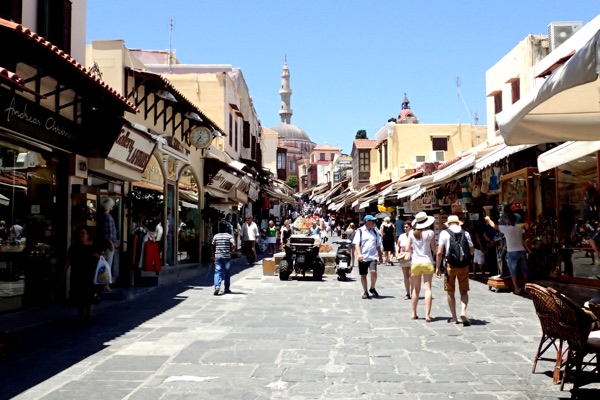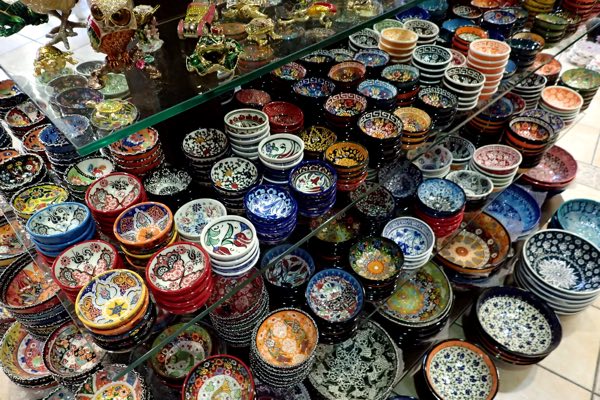
Kotor was first settled by the Ancient romans as early at the 5th century BC, and apparently was later turned into a fortified city but the Emperor Justinian in the 6th AD. It’s a big tri-angular fortress right on the port of the city, nestled in among the Montenegrin mountains and a picturesque inlet of the Adriatic sea. Since I was investigating this itinerary this time last year, I have been a bit puzzled as to why the ship calls at Kotor in Montenegro, rather than Dubrovnik in Croatia which is just an hour or so north by car… but after visiting today, I think we can happily say it is a very beautiful town with lots to offer than hardly anyone has ever heard of. Kotor is a maze of cobblestone streets, and simple buildings with terracotta toned roofs. There are a number of Romanesque churches and well preserved and restored buildings in the Old Town. I’m sure I’ll be back in the region again one day and will get to see Dubrovnik, but until today I had been lamenting that we weren’t going to Dubrovnik instead.

Right off the ship, the medieval Old Town is a just a short walk from the port. Passing through the enormous fortress walls is quite impressive in itself, and entering the square, visitors are greeted by a beautiful square with a beautiful clocktower.



Kotor was another Mediterranean kingdom that was conquered and conquered and conquered again – originally founded by Greeks in the 10th century BC, then the Illyrians, and then the Romans who ruled for 650 years,. After that the Visigoths stroke on in from Germania and demolished Kotor in the 5th century and then it became of part of the Byzantine Emptier in 476AD until c.800AD. Then when the Venetians were expanding their dynastic trade routes into the Adriatic, Kotor became and important artistic centre through the Middle Ages. There is plenty of evidence of medieval handiwork in the Old Town, in particular, in the massive defensive walls that protect the city, and in the medieval architecture inside the town. Kotor’s modern history is just as convoluted, but well… I’m less interested in all that. And if you think I remembered all this, you’re mad. I had to look it all up!
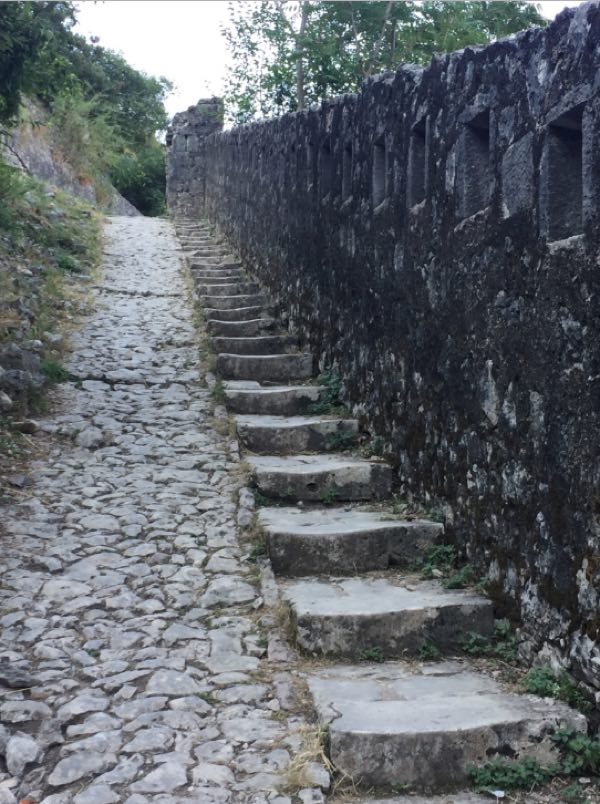 Some of our group decided to walk the fortress walls – got up there early before the heat (wise move it was seriously hot today), and they took the 1200 uneven cobbled steps involved to do the 4.5km walk around the fortress walls. More power to them, I would have loved to do it, but even take 800 steps off that and I’d have to have re-thought that plan the way my back is feeling at the moment. The views from the fortress are impressive…
Some of our group decided to walk the fortress walls – got up there early before the heat (wise move it was seriously hot today), and they took the 1200 uneven cobbled steps involved to do the 4.5km walk around the fortress walls. More power to them, I would have loved to do it, but even take 800 steps off that and I’d have to have re-thought that plan the way my back is feeling at the moment. The views from the fortress are impressive… 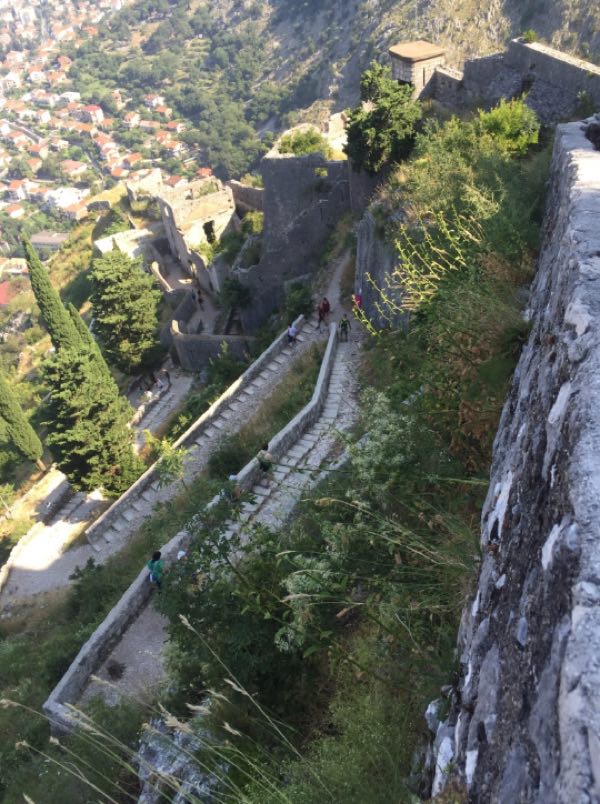 Kotor Inlet… the entire inlet is surrounded by the Montenegrian mountain range which rings the bay. It very effectively stifles any sea breezes from making it into the town. Add to that, the fact that the town is entirely walled, and you have one big hot box. The place if gorgeous, but it was almost unanimously agreed, that it would be twice as beautiful in shoulder season when you weren’t walking around in 35C heat without so much as a whiff of breeze to refresh you.
Kotor Inlet… the entire inlet is surrounded by the Montenegrian mountain range which rings the bay. It very effectively stifles any sea breezes from making it into the town. Add to that, the fact that the town is entirely walled, and you have one big hot box. The place if gorgeous, but it was almost unanimously agreed, that it would be twice as beautiful in shoulder season when you weren’t walking around in 35C heat without so much as a whiff of breeze to refresh you.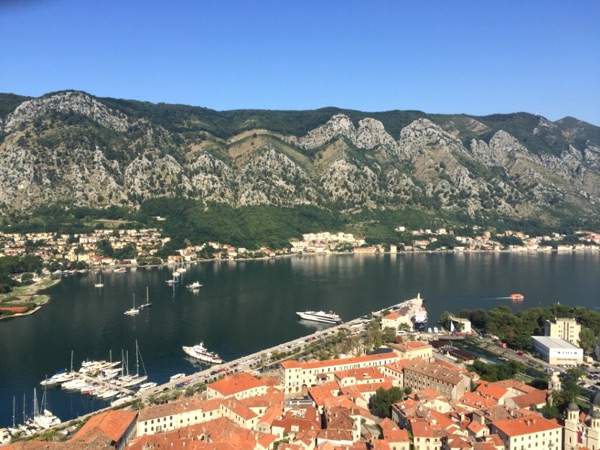
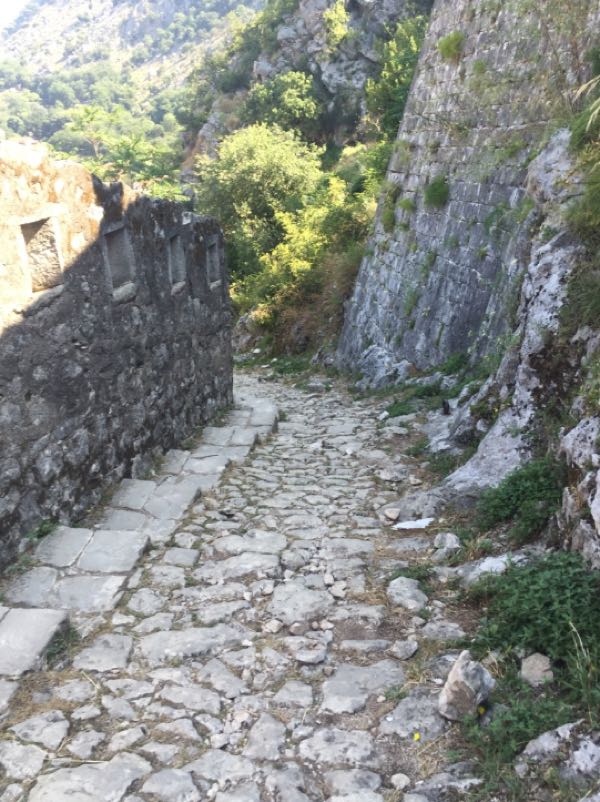
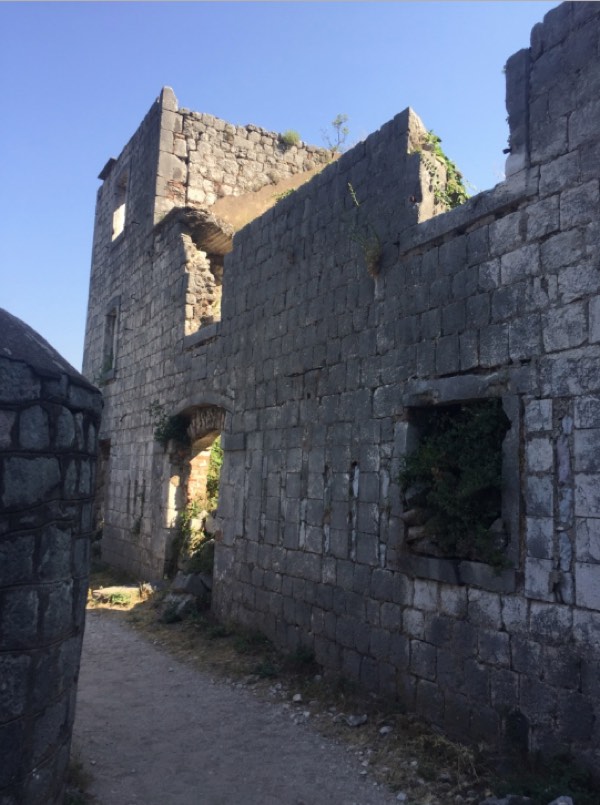 View over the rooftops from the top of the fortress.
View over the rooftops from the top of the fortress.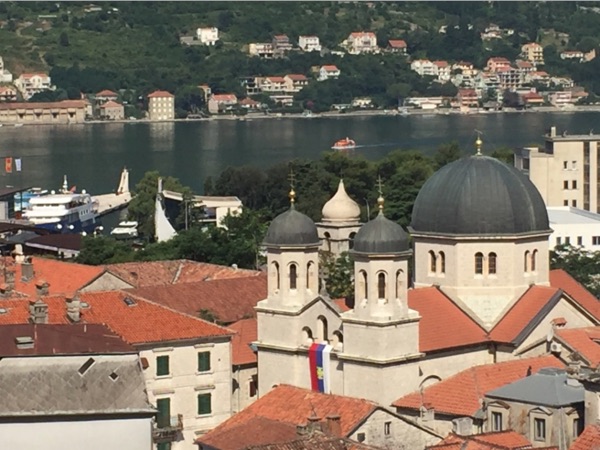
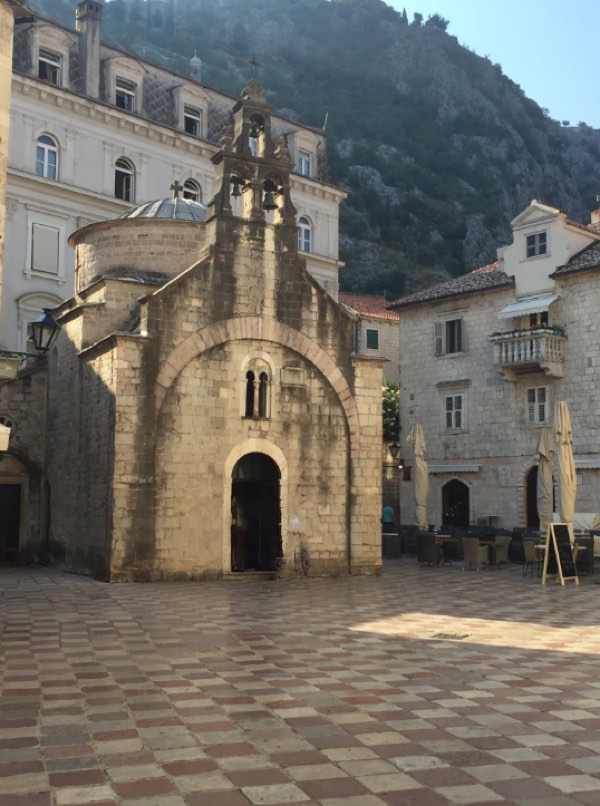
The St Tryphon Cathedral – dedicated to the city’s patron saint and protector; built in 1166, the interior has a lavish gilded altar, some medieval frescoes, and a museum collection of Venetian art, as well as many interesting and unusual medieval reliquaries.


 There was no English guide or plaques telling us what we were looking at, but most of the artefacts are 12th-16th century… so we had to wing it a little.
There was no English guide or plaques telling us what we were looking at, but most of the artefacts are 12th-16th century… so we had to wing it a little. Medieval saintly reliquaries of God-Knows-Who from God-Knows-Where. :/
Medieval saintly reliquaries of God-Knows-Who from God-Knows-Where. :/  Very cool plaque belt/girdle? Loved the work in it so photographed the lot. Rough guess 1300s-1500s… though my jeweller friends might have a better stab at that.
Very cool plaque belt/girdle? Loved the work in it so photographed the lot. Rough guess 1300s-1500s… though my jeweller friends might have a better stab at that.



Enormous chunky crown – though no idea whose it was or what time period we are talking here. Frustrating!
View from the top of the Cathedral down to the Square. Lots of meandering little back alleys.
Lots of meandering little back alleys. We found ourselves delayed leaving port due to a medical emergency, which we later found out was the result of a passenger falling between the ship and a tender boat when embarking the ship. Apparently the poor guy fell and was crushed, resulting in a broken leg and possibly some broken ribs. I hope he’s okay, and I hope Princess look after him and his family.
We found ourselves delayed leaving port due to a medical emergency, which we later found out was the result of a passenger falling between the ship and a tender boat when embarking the ship. Apparently the poor guy fell and was crushed, resulting in a broken leg and possibly some broken ribs. I hope he’s okay, and I hope Princess look after him and his family.
From the ship as we left port.



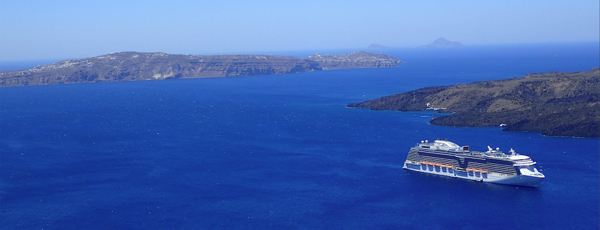 Three options to get to the town of Fira – 1) by cable car, 2) walk up the windy path to the top, and 3) take a dodgy donkey ride. Most of our group opted for donkey, and lots of fun was had. We were considering walking down, but the smell of donkey shit in the heat is not for the faint hearted!
Three options to get to the town of Fira – 1) by cable car, 2) walk up the windy path to the top, and 3) take a dodgy donkey ride. Most of our group opted for donkey, and lots of fun was had. We were considering walking down, but the smell of donkey shit in the heat is not for the faint hearted!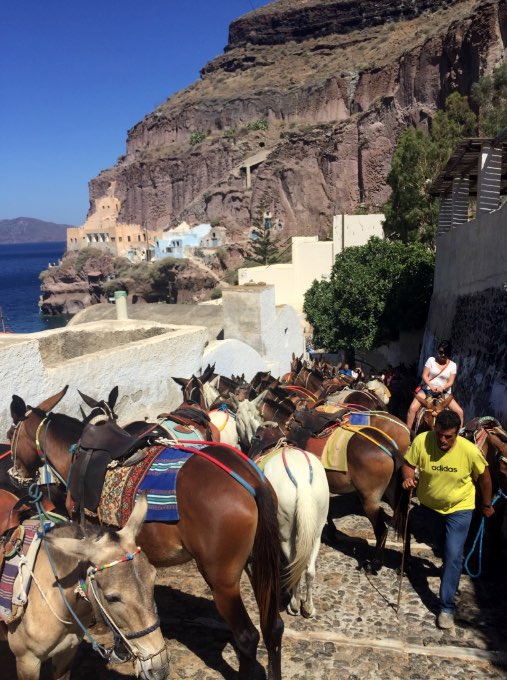 And then when you get to the top – it’s all just so picturesque.
And then when you get to the top – it’s all just so picturesque.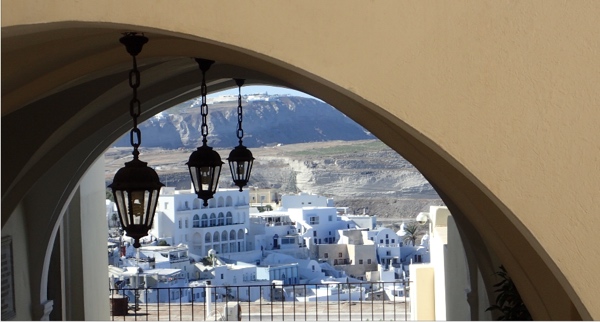
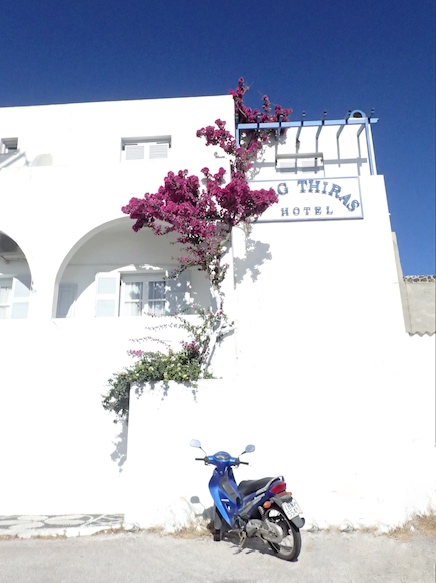
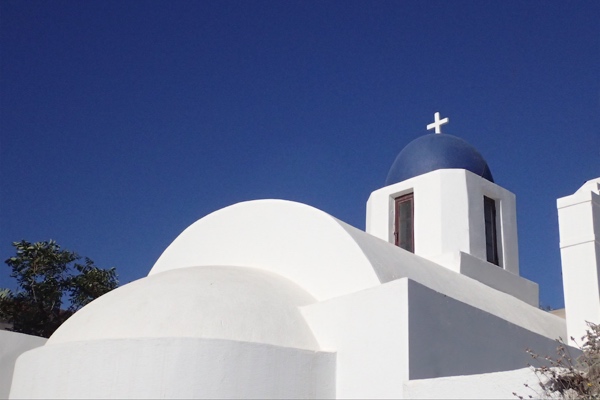
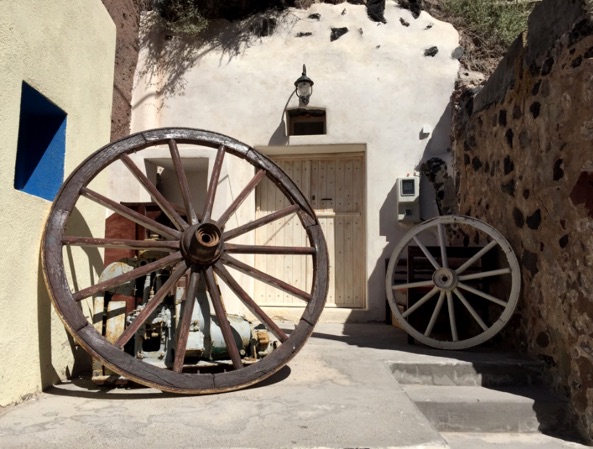
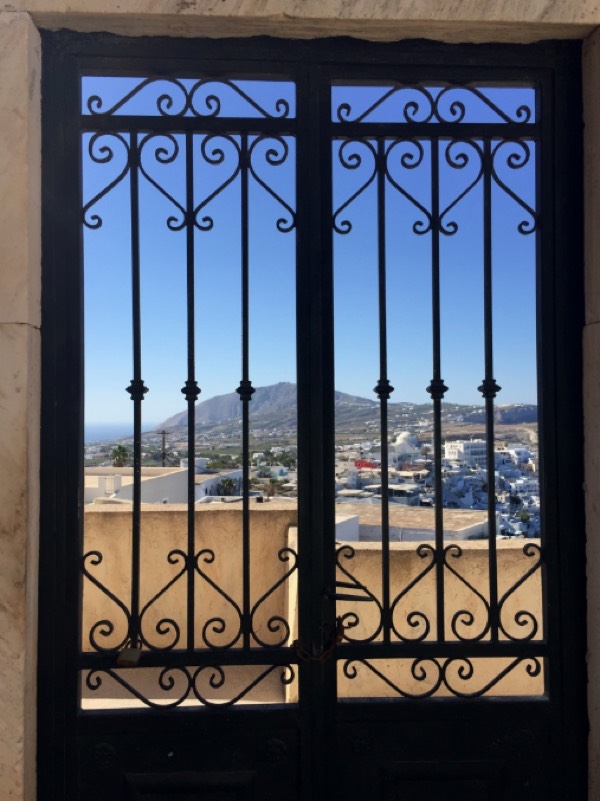
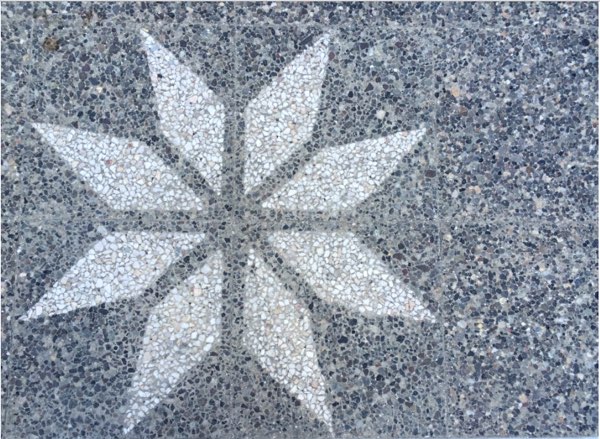
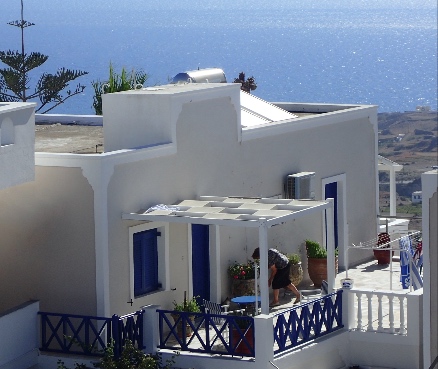 This is not painted on – all appearances to the contrary!
This is not painted on – all appearances to the contrary!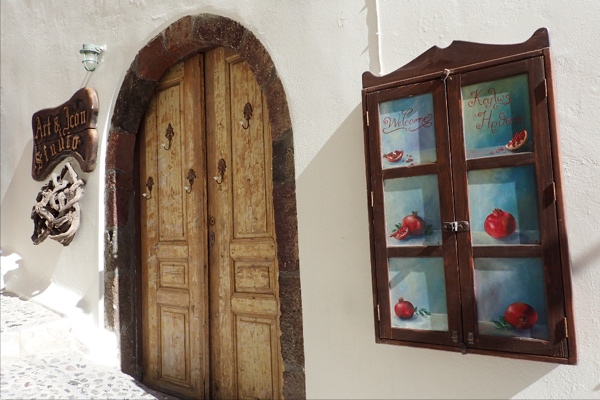
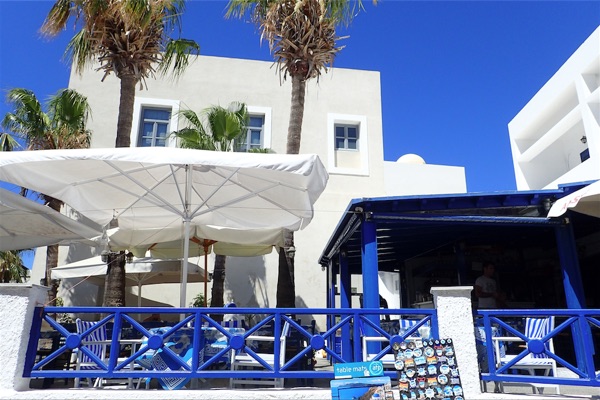
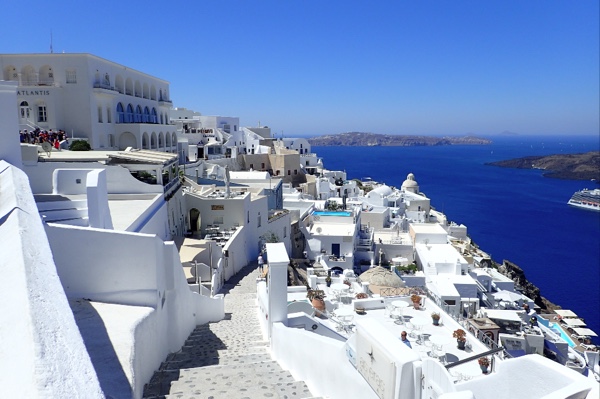
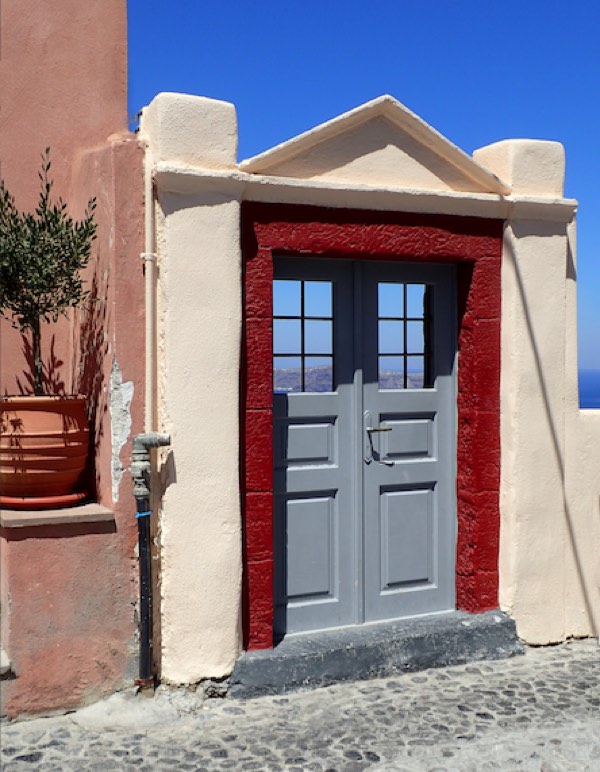
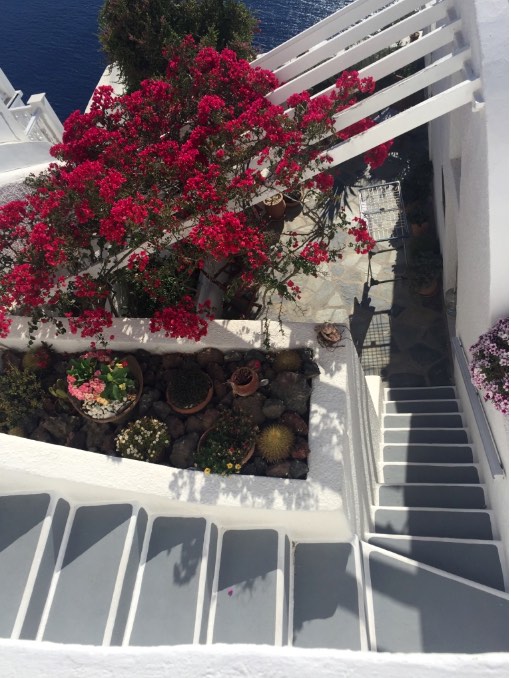
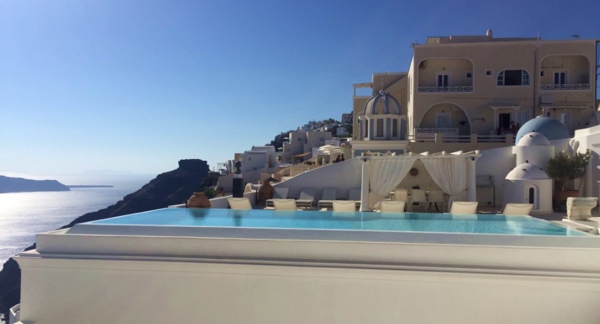
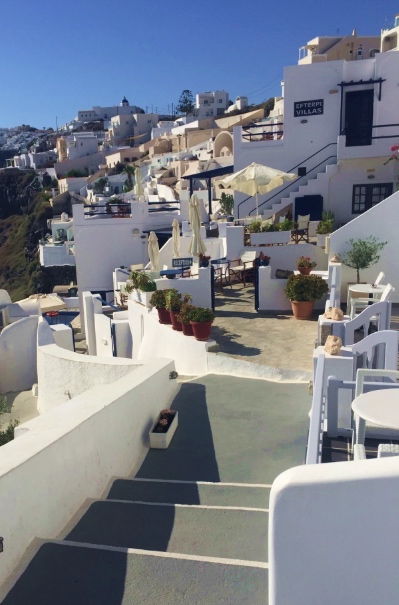
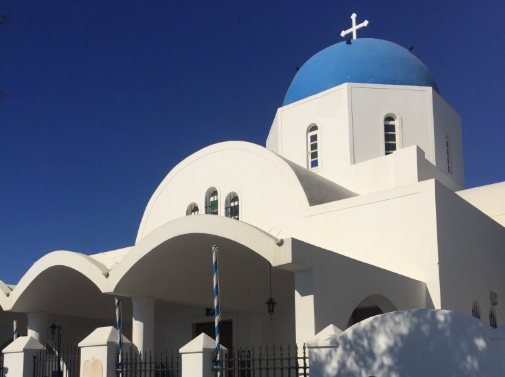
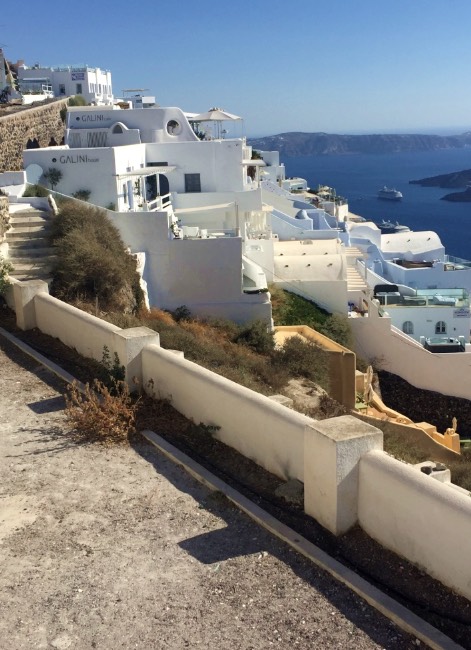 Tomorrow – a much needed sea day…
Tomorrow – a much needed sea day…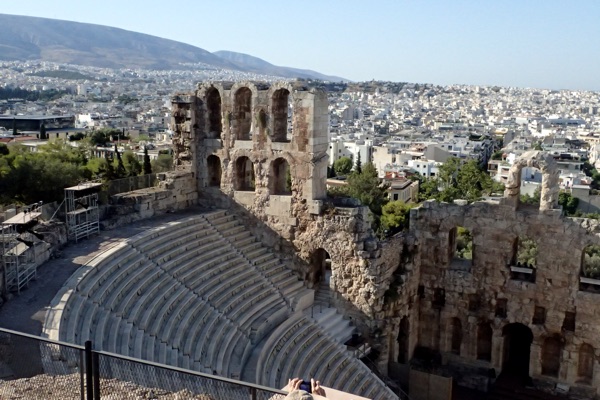 The amphitheatre – designed to hold approximately 45,000 people, the Acropolis amphitheatre is very impressive and with it’s restored and reconstructed seating, it is a popular place for modern concerts still.
The amphitheatre – designed to hold approximately 45,000 people, the Acropolis amphitheatre is very impressive and with it’s restored and reconstructed seating, it is a popular place for modern concerts still.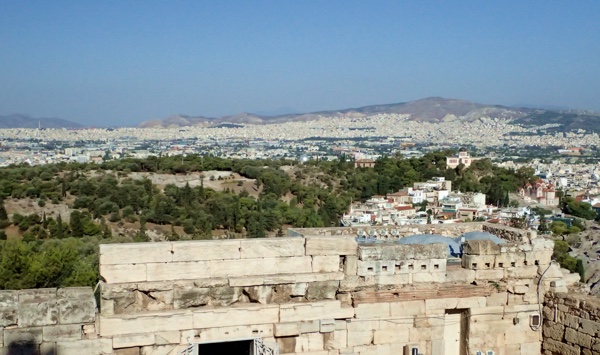 Look at that view – no smog at all… clear all the way to the port and the mountains in the other direction. I was seriously impressed at what a pretty city Athens is now. And all the buildings so low – no high rises. I think part of me expected it would have gone the way of many other large cities and be dotted with ridiculous 50 storey buildings, but the average building height is 4 to 6 storeys only.
Look at that view – no smog at all… clear all the way to the port and the mountains in the other direction. I was seriously impressed at what a pretty city Athens is now. And all the buildings so low – no high rises. I think part of me expected it would have gone the way of many other large cities and be dotted with ridiculous 50 storey buildings, but the average building height is 4 to 6 storeys only.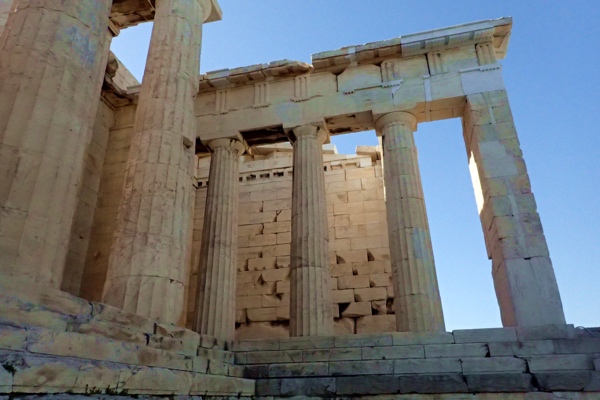 After climbing 80 steep and slippery marble steps, you reach the main west entrance gates, called the Propylaea, to the right of that is the Temple of Nike – goddess of Victory.
After climbing 80 steep and slippery marble steps, you reach the main west entrance gates, called the Propylaea, to the right of that is the Temple of Nike – goddess of Victory.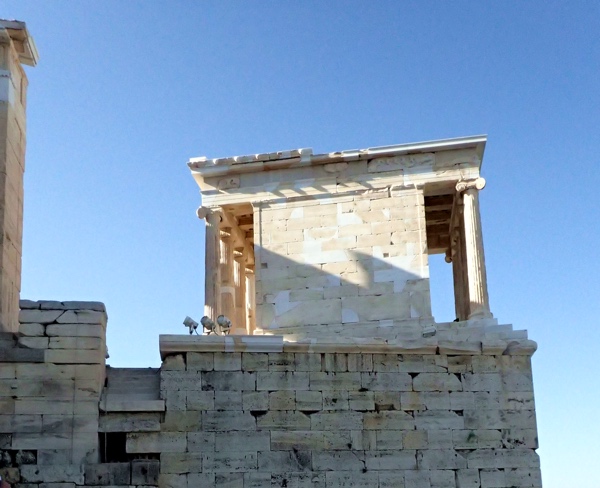 Of course, we climb to the top and find the west face of the Parthenon under scaffolding, and it is the nature of touring these ancient sites that the restoration process is never ending, so while it is always disappointing to see the scaffolds, it is good to know that they are preserving these monuments for future generations.
Of course, we climb to the top and find the west face of the Parthenon under scaffolding, and it is the nature of touring these ancient sites that the restoration process is never ending, so while it is always disappointing to see the scaffolds, it is good to know that they are preserving these monuments for future generations.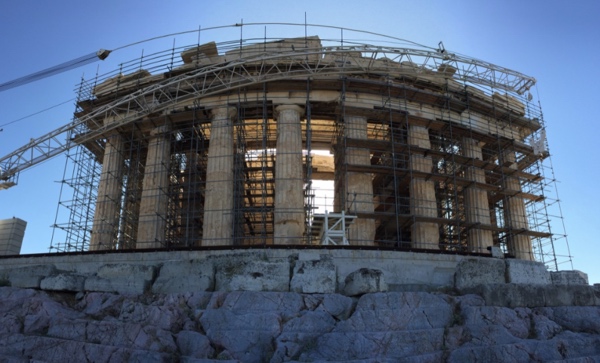 But were very pleased to see that conservationists are obviously doing things one end at a time and the east face looks splendid.
But were very pleased to see that conservationists are obviously doing things one end at a time and the east face looks splendid.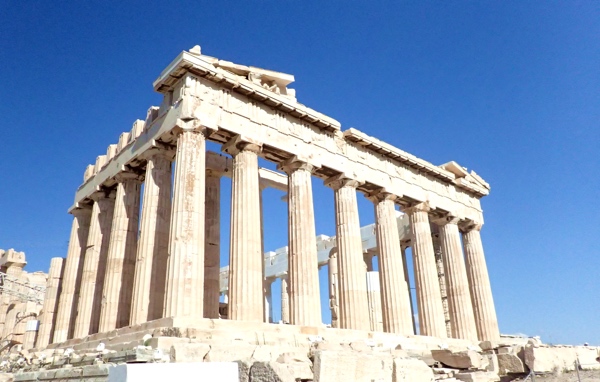
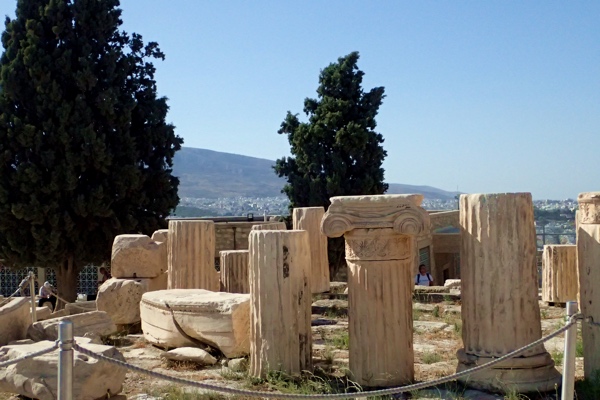 If you look carefully under the edge – you can see what looks like Lego brick markings…? What’s that about?
If you look carefully under the edge – you can see what looks like Lego brick markings…? What’s that about?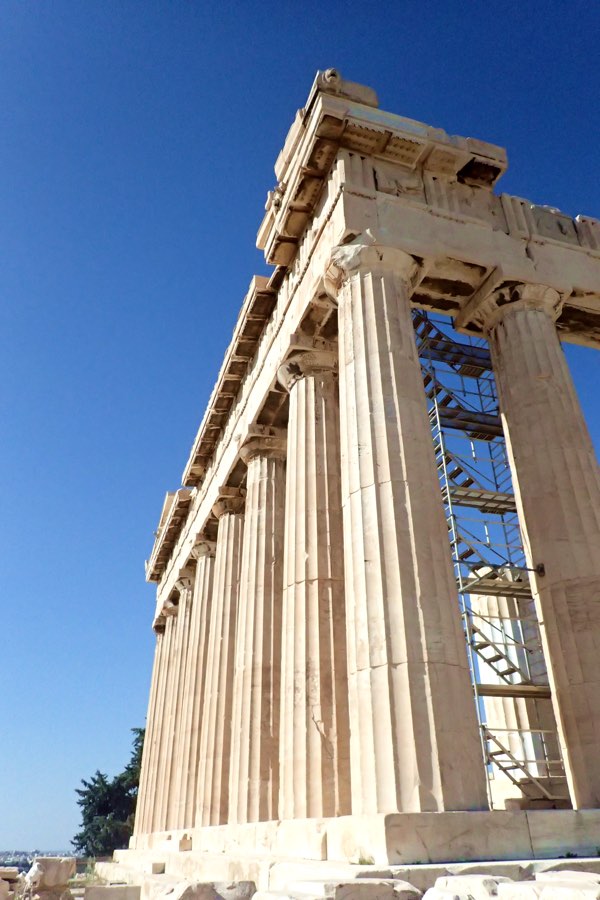 Porch of the Caryatids.
Porch of the Caryatids.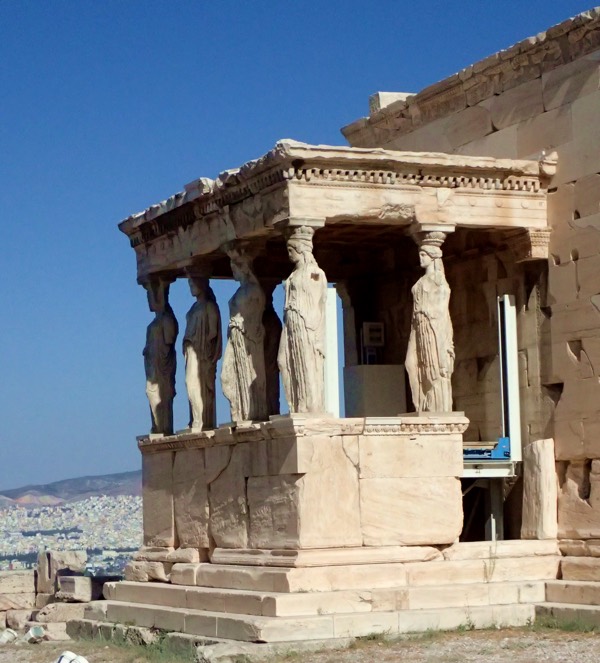 Beautiful work on the capitals. Always impressive.
Beautiful work on the capitals. Always impressive.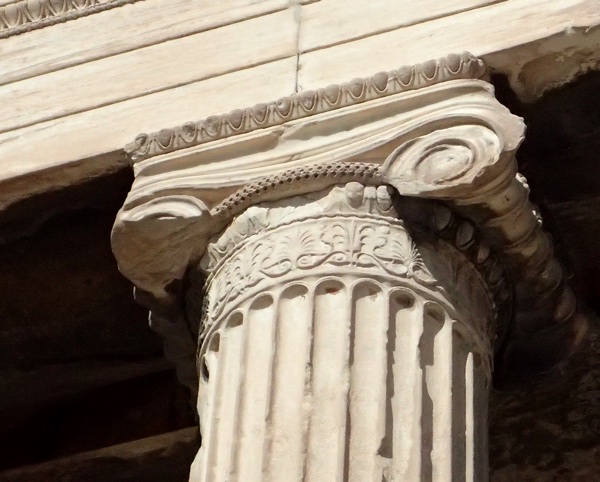 After we left the Acropolis, we did a drive by stop at the original Olympic Stadium that was built to host the competitive sports of 1896, and is where the Olympic torch passes for every modern Olympics.
After we left the Acropolis, we did a drive by stop at the original Olympic Stadium that was built to host the competitive sports of 1896, and is where the Olympic torch passes for every modern Olympics.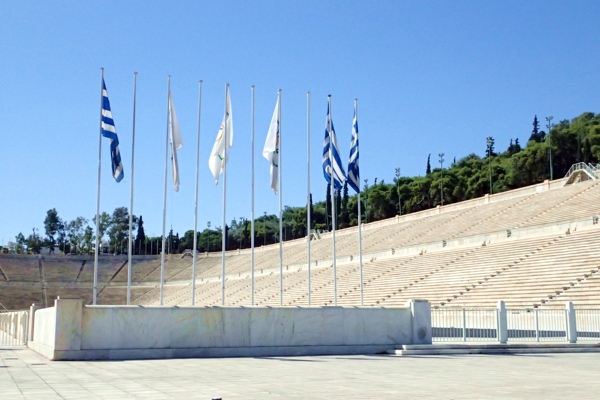 It was quite a beautiful stadium, but we were unable to go in, so from there we went to the Temple of Zeus which we had seen from the Acropolis. The Temple of Zeus originally had 100 of these enormous columns holding up an gigantic roof, but now only about 17 remain. It is not hard to imagine how impressive this building would have been with it’s large number of columns (even taller than those of the Parthenon) and large indoor space.
It was quite a beautiful stadium, but we were unable to go in, so from there we went to the Temple of Zeus which we had seen from the Acropolis. The Temple of Zeus originally had 100 of these enormous columns holding up an gigantic roof, but now only about 17 remain. It is not hard to imagine how impressive this building would have been with it’s large number of columns (even taller than those of the Parthenon) and large indoor space.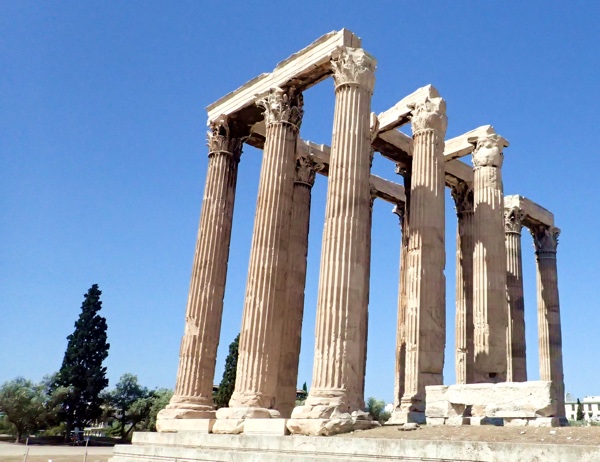 The kids were getting a bit restless with all this stuffy old history – so I asked them do build us a cheerleading pyramid. 🙂 On short notice, I think they did great!
The kids were getting a bit restless with all this stuffy old history – so I asked them do build us a cheerleading pyramid. 🙂 On short notice, I think they did great!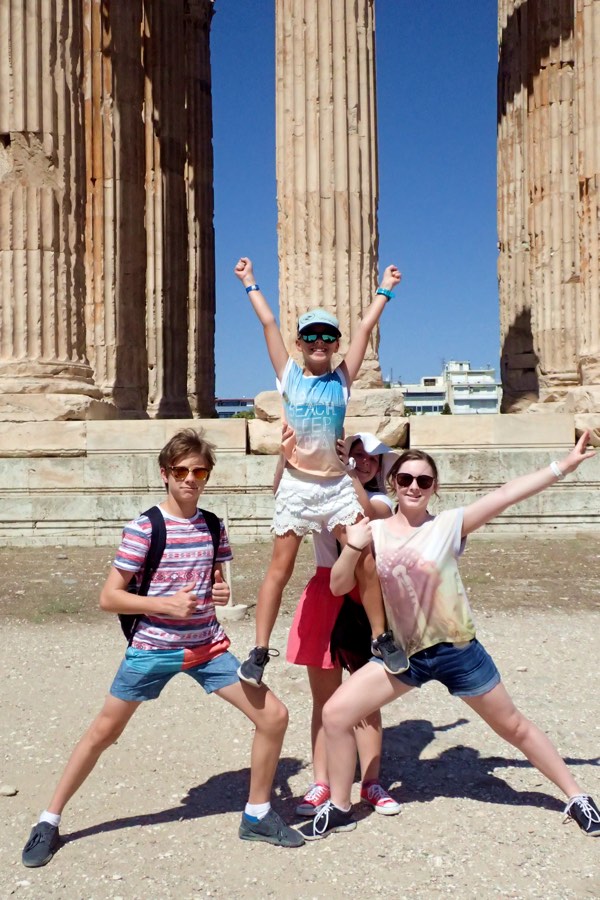
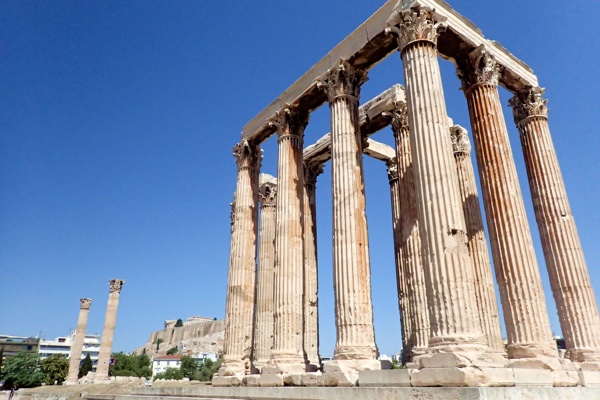 One of the columns was on the ground in broken form, which was in itself very interesting to see. From photos you can’t always tell how the columns are constructed, and as one of the kids pointed out, they had always thought the columns were in one big piece of stone, but here you can see how they are carved to fit together and taper correctly for stability. It was interesting to see this deconstructed column laying down, looking very much as if it were left where it had fallen.
One of the columns was on the ground in broken form, which was in itself very interesting to see. From photos you can’t always tell how the columns are constructed, and as one of the kids pointed out, they had always thought the columns were in one big piece of stone, but here you can see how they are carved to fit together and taper correctly for stability. It was interesting to see this deconstructed column laying down, looking very much as if it were left where it had fallen. 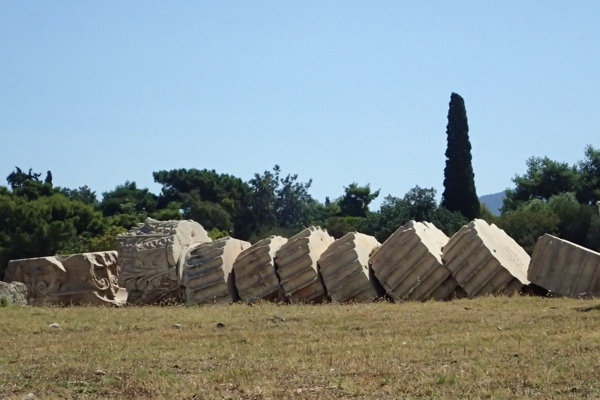 After this a quick drive around Constitution Avenue to see the guards at the Tomb of the Unknown Soldier – complete with funny be-pom-pom’d tap shoes. We were on the half hour, so saw them perform their little routine. It is a cross between the US Marines doing a change of the guard at Arlington Cemetery and Monty Python’s Ministry of Silly Walks. Seriously. Google up a Youtube video – you’re sure to find one, they look very odd.
After this a quick drive around Constitution Avenue to see the guards at the Tomb of the Unknown Soldier – complete with funny be-pom-pom’d tap shoes. We were on the half hour, so saw them perform their little routine. It is a cross between the US Marines doing a change of the guard at Arlington Cemetery and Monty Python’s Ministry of Silly Walks. Seriously. Google up a Youtube video – you’re sure to find one, they look very odd.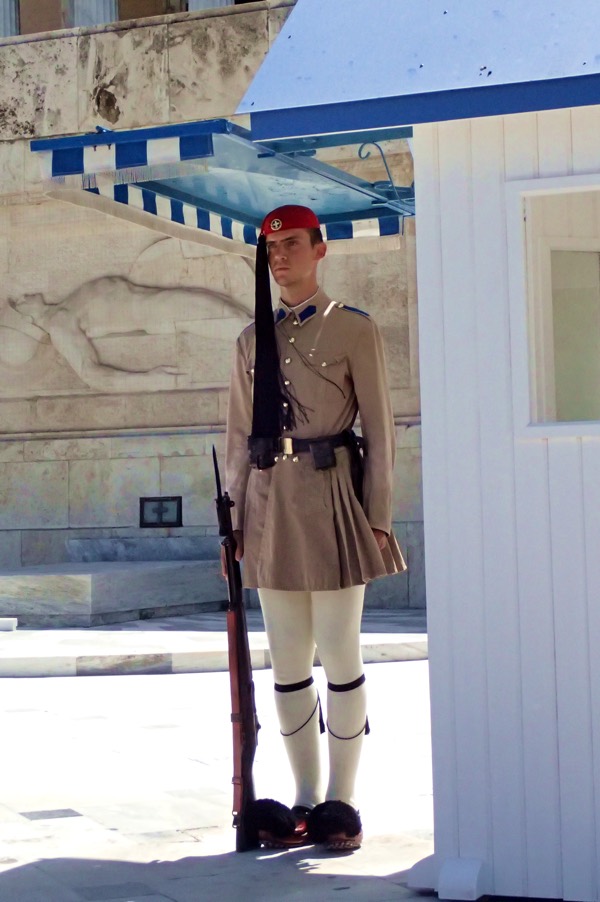 From there we went to the Agora – which represents the old Greek marketplace (late used as a Roman forum) where trade and commerce would be executed in the city centre. There is spaces for worship, spaces for commerce, spaces for retail and trade. There were also places of regulation here – someone to regulate coinage and stop counterfeiting, someone to regulate weights and measures, someone to regulate even the size of tiles made for construction. Obviously since time immemorial, retailers and merchants have been trying fun and interesting things to rip off their customers, and vice versa!
From there we went to the Agora – which represents the old Greek marketplace (late used as a Roman forum) where trade and commerce would be executed in the city centre. There is spaces for worship, spaces for commerce, spaces for retail and trade. There were also places of regulation here – someone to regulate coinage and stop counterfeiting, someone to regulate weights and measures, someone to regulate even the size of tiles made for construction. Obviously since time immemorial, retailers and merchants have been trying fun and interesting things to rip off their customers, and vice versa!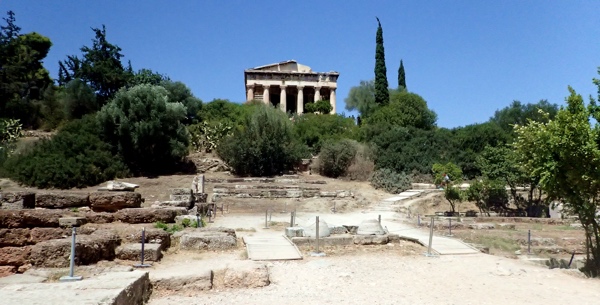
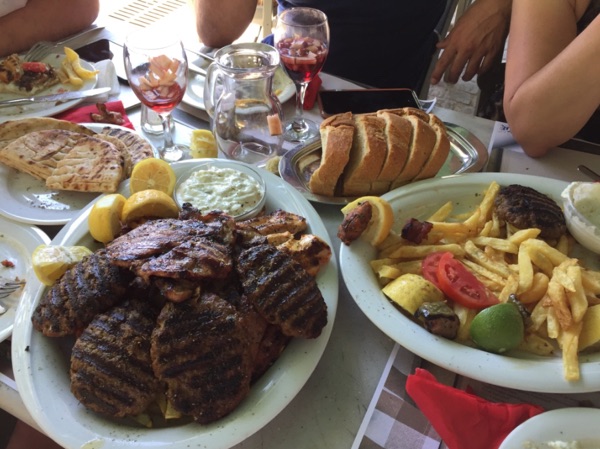
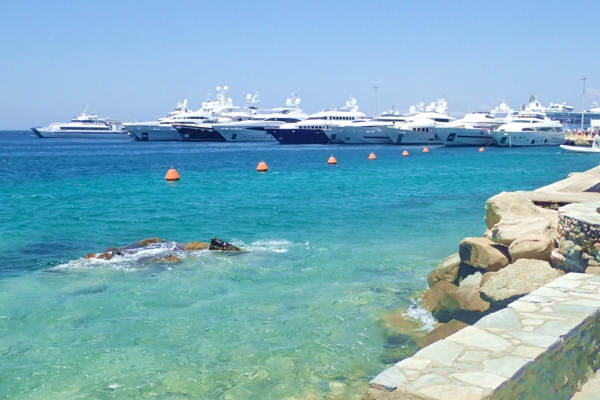
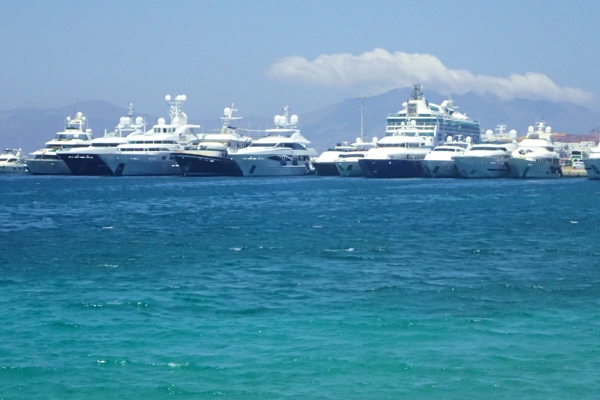
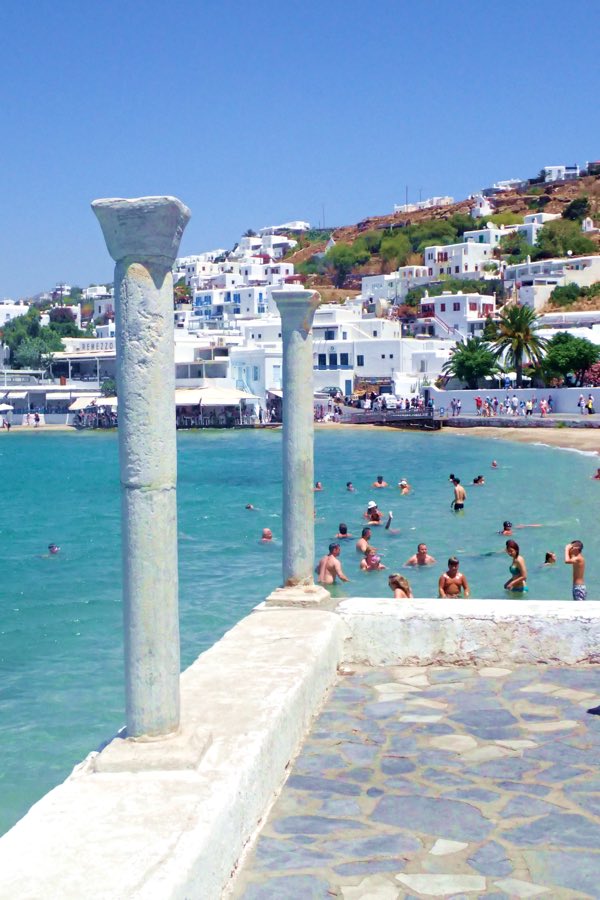
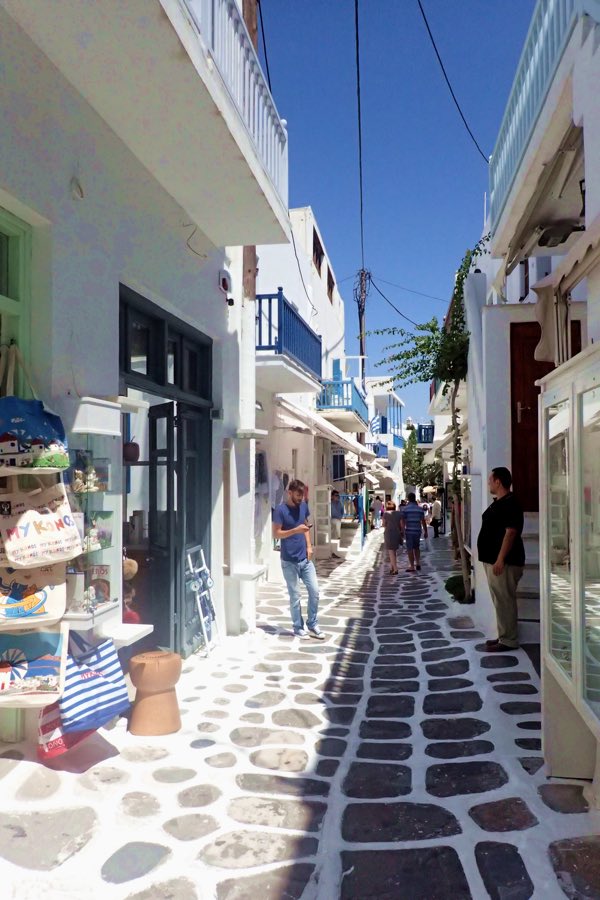
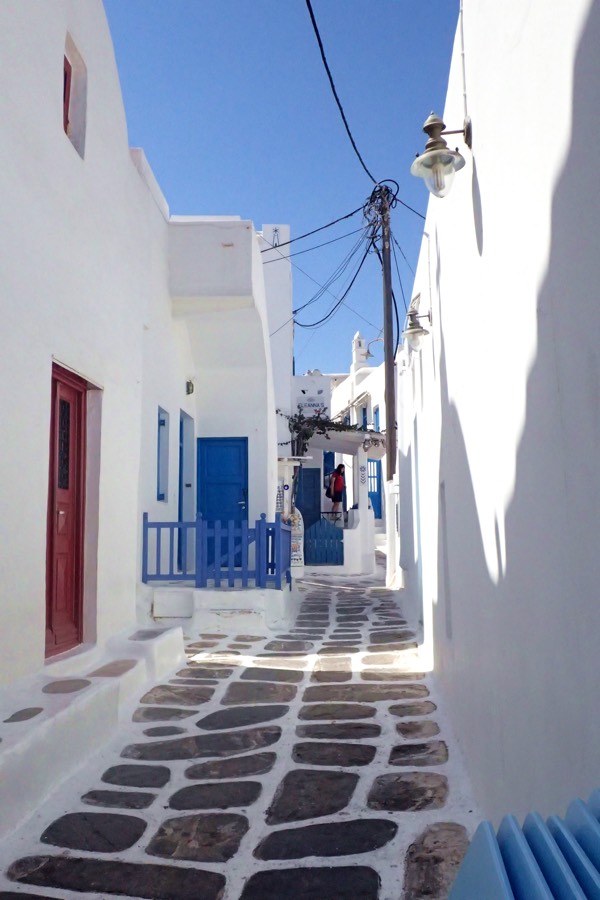 Familia restaurant…
Familia restaurant…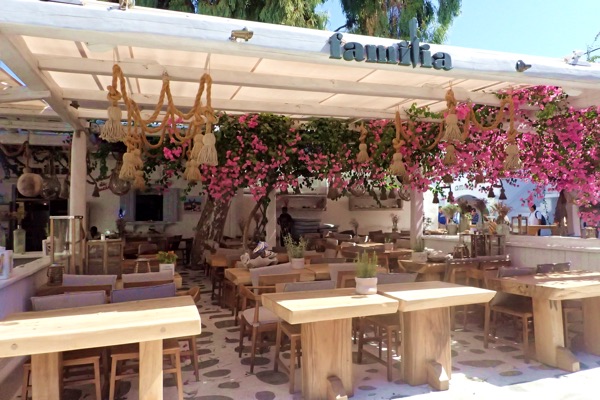 Flowers, white wash, blue paint, lovely lovely lovely! Must be in Greece!
Flowers, white wash, blue paint, lovely lovely lovely! Must be in Greece!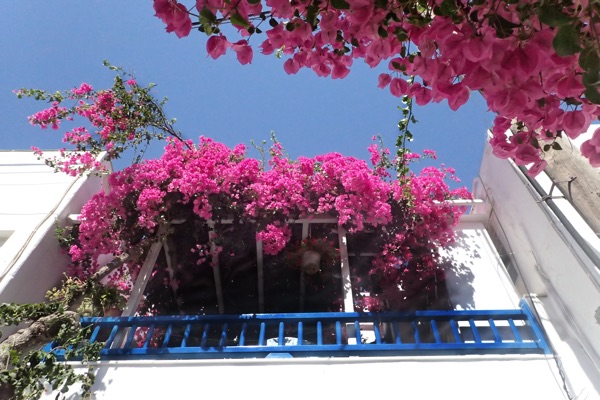 I think I saw this in a coffee table book somewhere…
I think I saw this in a coffee table book somewhere…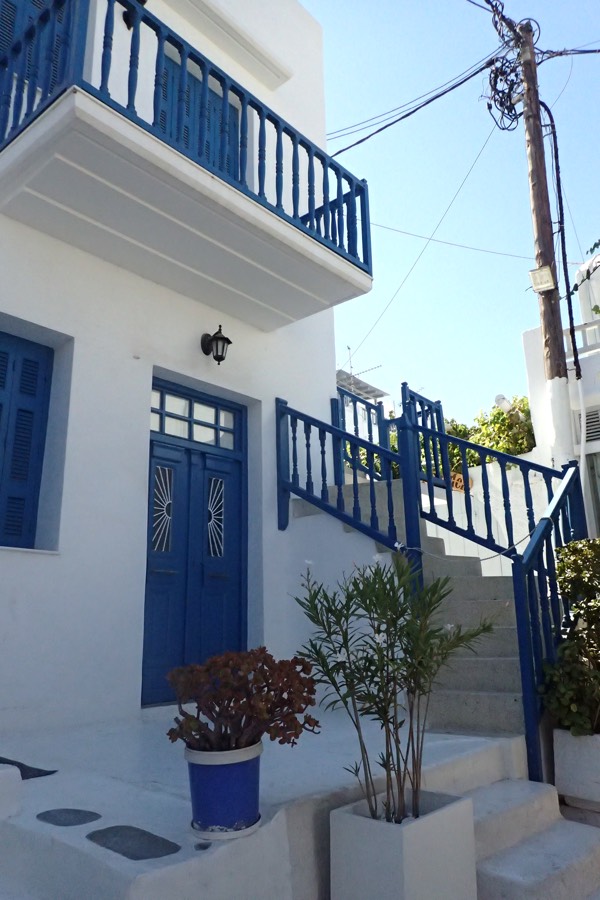
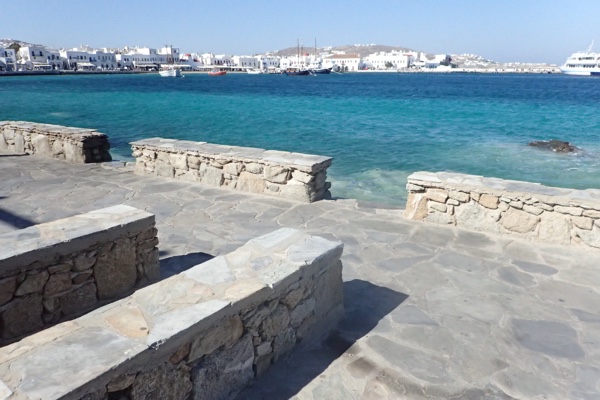
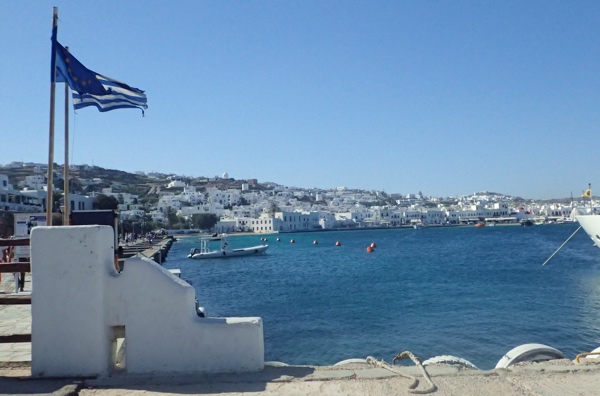
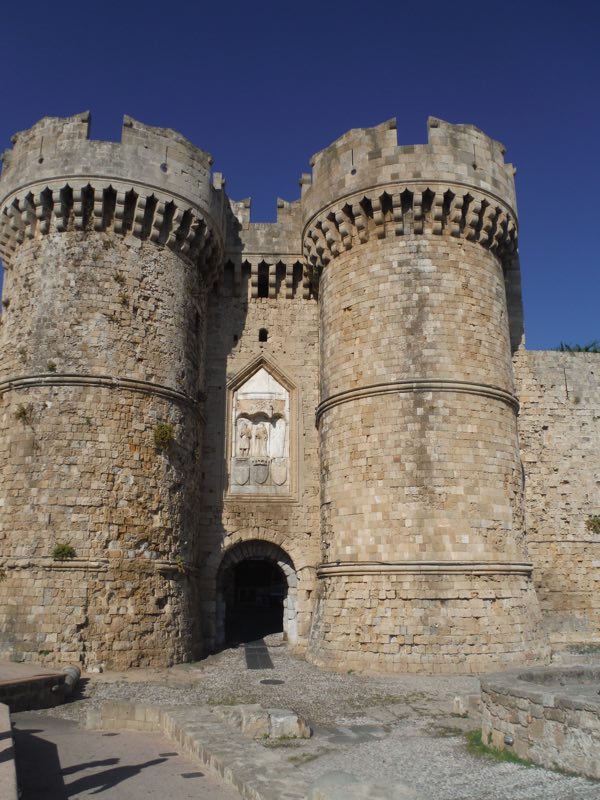 Rhodes’ most striking features now are the thick medieval fortress walls of the Old Town which is like a huge living museum.
Rhodes’ most striking features now are the thick medieval fortress walls of the Old Town which is like a huge living museum.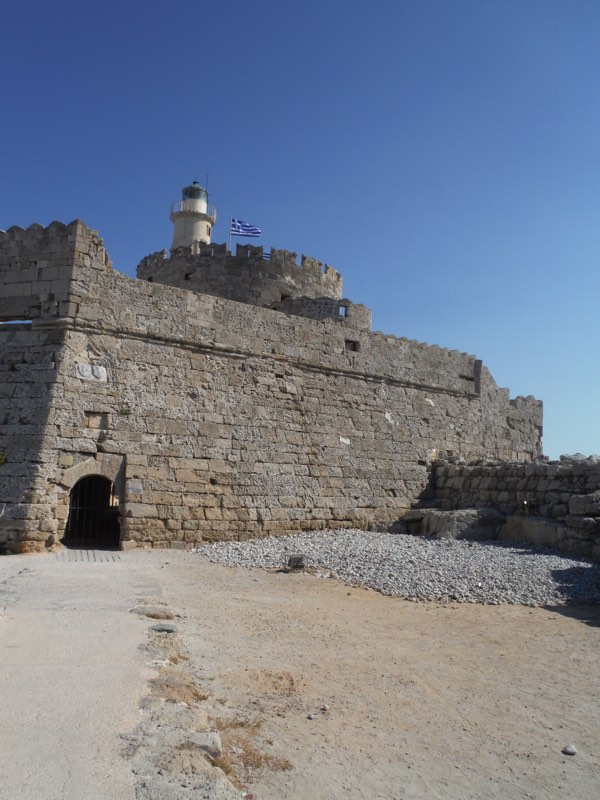
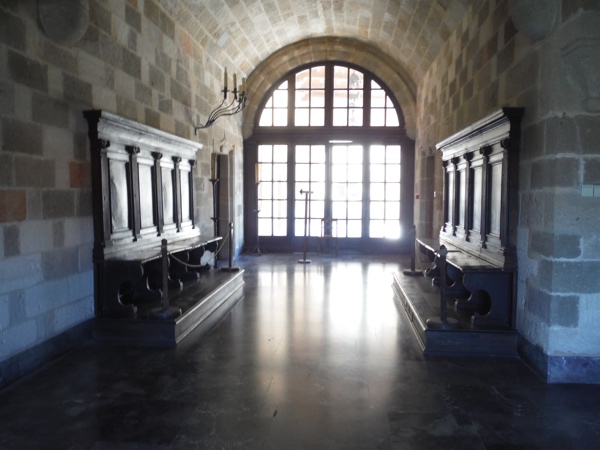
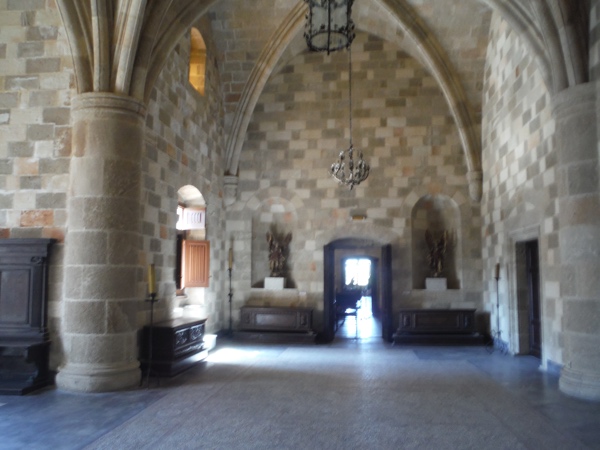
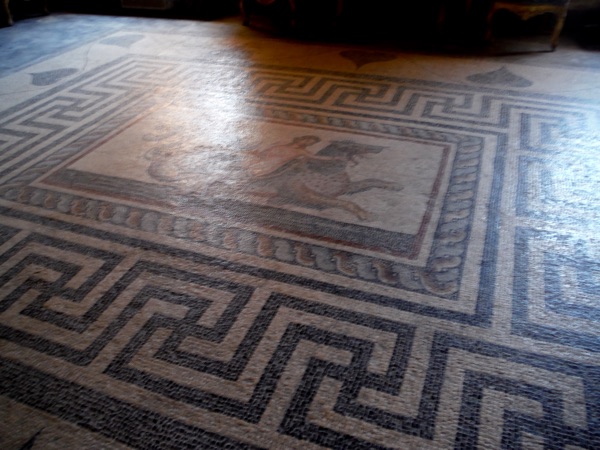
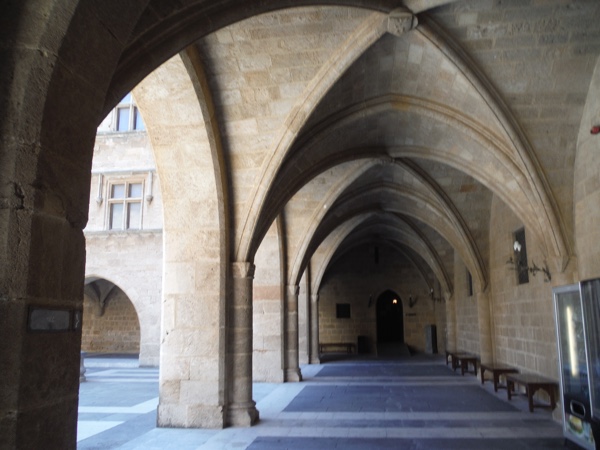
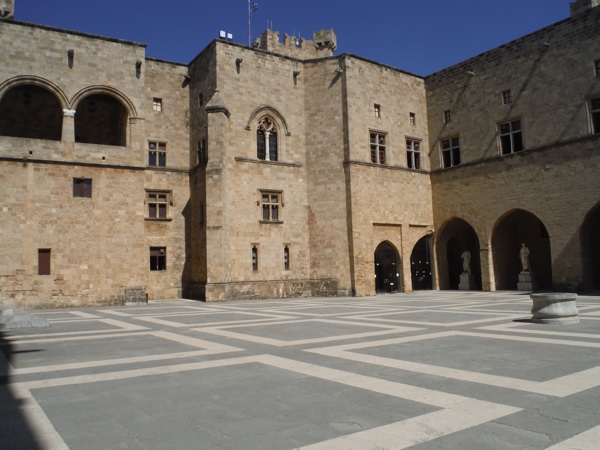
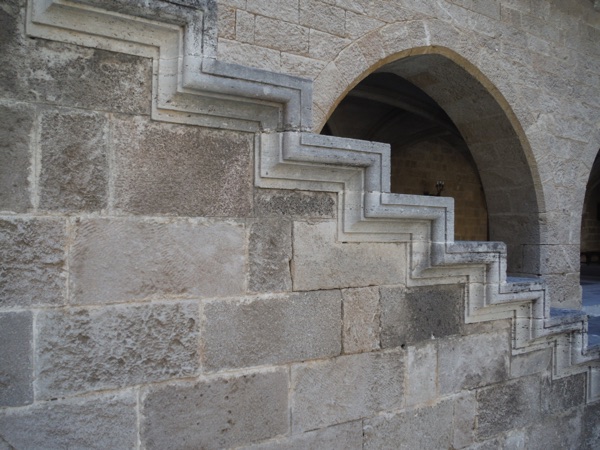
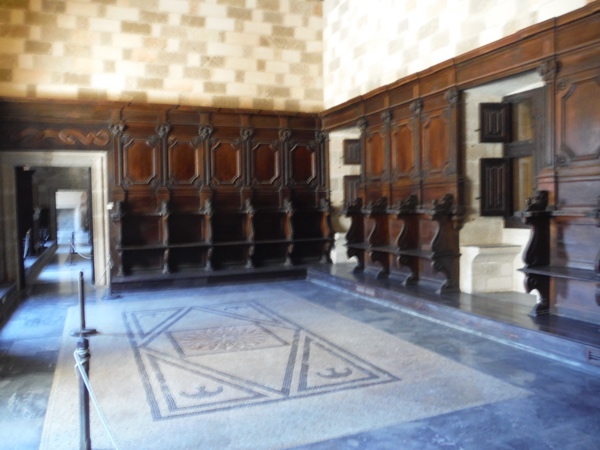 Street of the Knights
Street of the Knights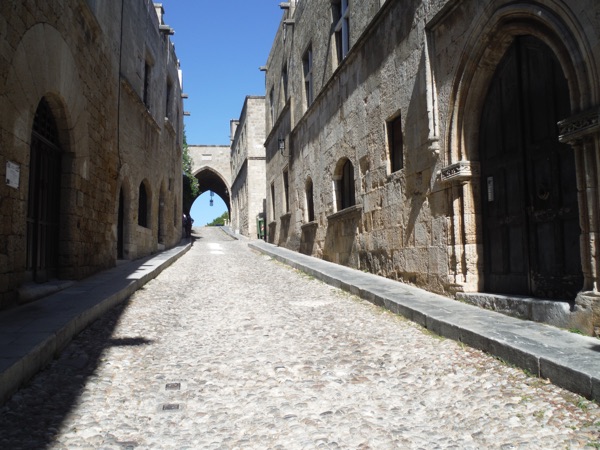
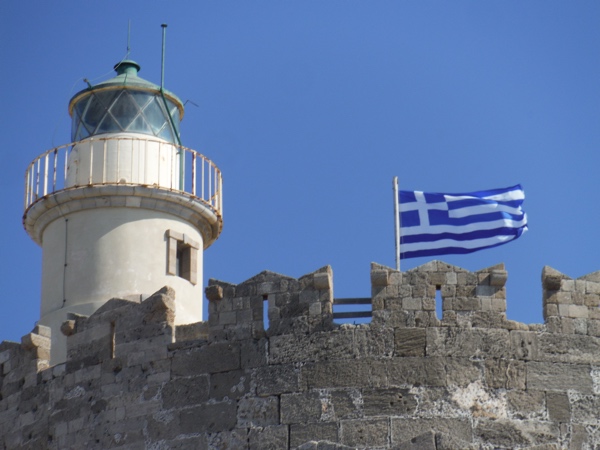 Medieval windmills – used for grinding grain etc.
Medieval windmills – used for grinding grain etc.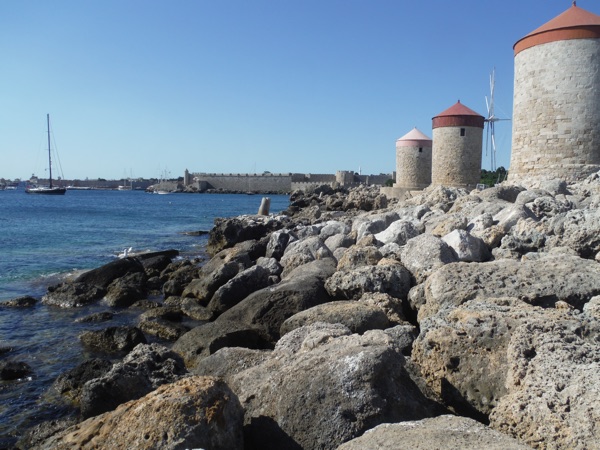 Lunch at the Socratus Garden…
Lunch at the Socratus Garden… 